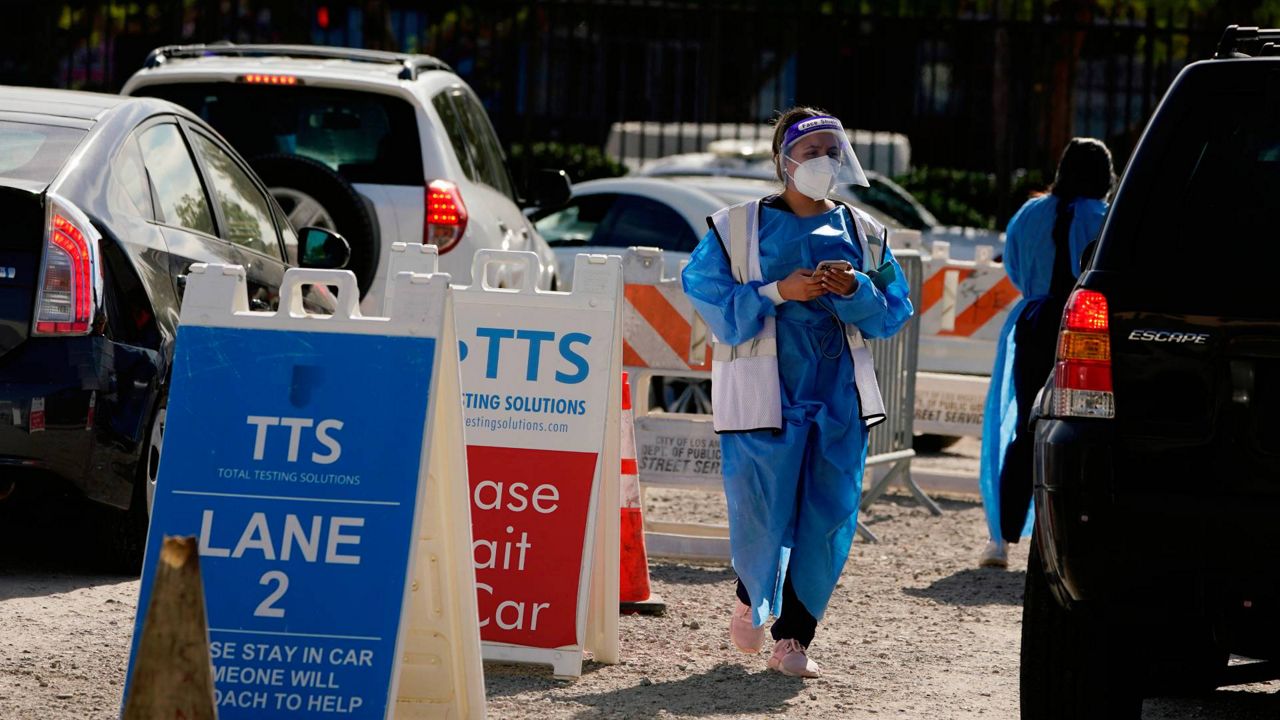LOS ANGELES (CNS) — Los Angeles County’s coronavirus metrics continue to trend in the right direction as the number of COVID-positive patients in county hospitals dropped by another 10 people to 422, according to the latest state figures out Sunday.
Of those patients, 71 were in intensive care, up three from Saturday’s number.
What You Need To Know
- The number of COVID-positive patients in county hospitals dropped to 422, according to the latest state figures out Sunday
- The rolling average daily rate of people testing positive for the virus dropped to 0.6% as of Saturday
- The county has recorded cases of BA.2 locally
- Public Health Director Barbara Ferrer said it will likely soon become the dominant strain of the virus
The overall hospitalization total hasn’t been this low since July 2021.
The latest numbers come one day after local health officials reported 727 new positive COVID tests and 25 additional deaths linked to the virus, bringing the county’s cumulative totals to 2,823,354 cases and 31,462 fatalities since the pandemic began.
The rolling average daily rate of people testing positive for the virus, which had remained largely unchanged at 0.7% for the past week, dropped to 0.6% as of Saturday, according to the Los Angeles County Department of Public Health.
The department also noted Saturday that 2,517 additional cases have been added to the cumulative total of positive cases due to a backlog from the winter surge.
The county does not report COVID data on Sundays.
Public Health Director Barbara Ferrer told reporters Thursday that the county’s virus metrics have continued a steady decline, but said officials are keeping a close watch on the spread of the BA.2 omicron sub-variant of the virus. BA.2 has been spreading rapidly in some countries, and Ferrer noted that it is believed to be about 30% more contagious than omicron.
The county has recorded cases of BA.2 locally, and Ferrer said it will likely soon become the dominant strain of the virus.
In a statement Friday, Ferrer said that as long as the virus continues to spread — even at a far slower pace than during the winter surge — people should continue taking reasonable precautions, particularly in workplaces.
“While we are all enjoying having the surge behind us, many front-line workers, with dozens of worksite exposures each day, remain at higher risk and are worried about becoming infected and possibly spreading COVID-19 to others,” she said. “We ask that everyone continue to layer in, as appropriate, protections for our workforce members who have, throughout the pandemic, taken on personal risk to provide all of us with essential services. I encourage residents to help protect the thousands of front-line workers who are at elevated risk by supporting those businesses who properly protect their workers.”



